
MySQL DBA at a tech vendor with 501-1,000 employees
It's easy to find blocking or locking queries, to kill queries, and to explore table structure.
What is most valuable?
Query tuning, historical graphs, real time statistics on query usage, easy to find blocking or locking queries, easy to kill queries, easy to add new datafiles to tablespaces about to run out of space, easy to explore table structure
How has it helped my organization?
For Oracle databases we setup e-mail alerts through OEM. Setup several maintenance jobs to handle previously time consuming tasks such as automatically adding datafiles to a tablespace about to run out of space. Improved root cause analysis on database slowness issues
What needs improvement?
For databases and servers with high blocking issues, the monitoring and graphs in OEM frequently became so over loaded that they could not be used and would not load making OEM useless for troubleshooting certain production issues. When this would happen, I had to go back to using queries from the sqlplus command line.
For how long have I used the solution?
2 years
Buyer's Guide
Oracle Enterprise Manager
October 2025
Learn what your peers think about Oracle Enterprise Manager. Get advice and tips from experienced pros sharing their opinions. Updated: October 2025.
872,778 professionals have used our research since 2012.
What do I think about the stability of the solution?
OEM agents on database servers frequently stopped collecting data and had to be restarted.
What do I think about the scalability of the solution?
Unknown, wasn't involved much with scalability but the Enterprise Manager web based site did get a little slower as we added thousands of servers.
How are customer service and support?
Oracle support is helpful and knowledgeable.
Which solution did I use previously and why did I switch?
Used Toad a little bit but didn't have a solution exactly like EM. Toad licensees were expensive and had to be installed on each user's machine while enterprise manager was web based and I'm sure Oracle gave the company special pricing since we already used so many of their products.
What other advice do I have?
Use as many features as possible but the more you rely on Enterprise Manager, the more you must remove and SPOF by having redundancy (RAC clusters or whatever failover solution you choose) and having a hot backup in a separate data center using data guard or some other replication technology so that if your data center goes down you can still bring up Enterprise Manager some where else.
Disclosure: My company does not have a business relationship with this vendor other than being a customer.
Oracle Consultant & DBA - Cloud Support Engineer at Amazon Web Services
Top features are the ability to consolidate information and access to my databases into a single portal
What is most valuable?
Consolidate information and access to my databases into a single portal.
How has it helped my organization?
We increased our capacity and speed of detection, diagnose & resolution of database issues.
What needs improvement?
UI is the part that I like to see improved in the future.
For how long have I used the solution?
I have been using EM for almost 6 years.
What was my experience with deployment of the solution?
Not so much, and all easily fixed.
What do I think about the stability of the solution?
Not in version 12c, EM uses Database 11gR2 and WebLogic that both have superb stability.
What do I think about the scalability of the solution?
None and, in case of need, we can always add another WebLogic Server or another node to the database tier.
How are customer service and technical support?
Customer Service: Oracle Support is very good most of the time.Technical Support: You start with junior technicians, but you can escalate if necessarily.
Which solution did I use previously and why did I switch?
No, previously we used Enterprise Manager Database Console, that is a local DB console.
How was the initial setup?
We're used to Oracle products, so the deployment wasn't complex at all.
What about the implementation team?
We did the implementation ourselves.
What's my experience with pricing, setup cost, and licensing?
I don't have a money estimate, but in man-hours, a deploy in a single machine, for an estimate of 100 targets, takes 8 hours.
Which other solutions did I evaluate?
Yes, we evaluated Pandora, Nagios and Zabbix.
What other advice do I have?
Follow the installation guide step by step, there won't be any surprises. Check your memory, CPU & disk requirements before implementation.
Disclosure: My company does not have a business relationship with this vendor other than being a customer.
Buyer's Guide
Oracle Enterprise Manager
October 2025
Learn what your peers think about Oracle Enterprise Manager. Get advice and tips from experienced pros sharing their opinions. Updated: October 2025.
872,778 professionals have used our research since 2012.
Database Senior Manager at a financial services firm with 1,001-5,000 employees
Excellent in monitoring and the ability to quickly drill down, see and identify issues. Smooth initial deployment.
What is most valuable?
Monitoring and the ability to quickly drill down, see and identify issues. Also provisionning is an interesting option as long as it works.
How has it helped my organization?
We have set up a lot of alerts which can notify us immediately when something arises and this is keeping our SLA's kept. Additionally we have made customized reports on KPI's in order to quickly get the whole picture and keep management apprised - also so we can show how a change has made an impact.
What needs improvement?
Setting up provisioning can be a challenging. Also there are a lot of bugs and some specific to platforms. Not every platform is equally supported.
For how long have I used the solution?
Personally 6 years, in the company more than that (from version 9 up to 12c)
What was my experience with deployment of the solution?
With the initial deployment no, went smoothly for the last version. In the previous there were some issues that were frustrating but in the end not so hard to overcome.
What do I think about the stability of the solution?
Initially after the upgrade/installation of every version we have had issues with stability and performance. After a couple of weeks tuning and tweaking it stabilizes and then we have no more trouble - till the next upgrade.
What do I think about the scalability of the solution?
No, we have not had any issues. That is probably because at a point we decided to set up a second installation for our test environments and we have divided the workload between the two installations.
Which solution did I use previously and why did I switch?
Before using OEM we had a lot of scripts to check database health, also we have and use some other solutions for monitoring. OEM provided everything in a single package and has a lot more options, plus it is a lot better at monitoring databases then anything else.
How was the initial setup?
With every version it becames easier to set it up. Depending of course on the platform, but still with 12c it is really straight forward.
What about the implementation team?
We tried to involve Oracle for a upgrade and migration project from version 11g to 12c. After more than a year finally they gave up and said it cannot be done. We then did it in-house, workaround it (with their support of course) we migrated the 11g version and then upgraded it. Every other upgrade/installation was done in-house.
What's my experience with pricing, setup cost, and licensing?
Sorry can not say about the cost, we have always used as little hardware as possible.
Which other solutions did I evaluate?
Not a lot. Mainly we looked at what we have and then went for OEM as most of our DBs are Oracle. We have monitoring from HP BAC/Mercury.
What other advice do I have?
It is a must if you have more than a couple of databases to monitor and manage, it can also do a lot of other stuff and monitor various types of targets. It has a good system for testing applications. It has a lot of potentials but best advice is read through the documentation and know what you are getting, check with somebody who is already using it to get the best idea.
Disclosure: My company does not have a business relationship with this vendor other than being a customer.
Database Manager at a recruiting/HR firm with 51-200 employees
I really like that Statspack has evolved into AWR, ADDM and ASH reports, fully automated out of the box.
Valuable Features:
I really like how Statspack has evolved into AWR, ADDM and ASH reports, fully automated out of the box.
Improvements to My Organization:
Being able to capture performance information that occurred in the past is very helpful, when tracking down anomalies.
Room for Improvement:
I would like to see more functionality/information in Standard Edition Oracle for the same performance analysis.
Use of Solution:
I have used Oracle Enterprise Manager since version 9i.
Deployment Issues:
No, not really.
Stability Issues:
No, not really.
Customer Service:
Good.
Initial Setup:
Initial setup is straightforward.
Implementation Team:
DBA Team implementations.
Cost and Licensing Advice:
Cant speak to that.
Other Advice:
Network. Ask what other people are doing and using, and if their environment is similar in terms of use and capacity.
Disclosure: My company does not have a business relationship with this vendor other than being a customer.
Database Manager at a energy/utilities company with 501-1,000 employees
Valuable reporting and tuning features. Improved my companies central reporting and management tool for Oracle database
What is most valuable?
Reporting and tuning
How has it helped my organization?
Central reporting and management tool for Oracle database and middle-tier products
What needs improvement?
BI Publisher integration; EM CLI commands
For how long have I used the solution?
Four years
What was my experience with deployment of the solution?
Agent deployments are easy
What do I think about the stability of the solution?
Not with 12c OEM
What do I think about the scalability of the solution?
No
Which solution did I use previously and why did I switch?
Home-built shell scripts required maintenance, incurred higher overhead, and exposed the company to risk if a key employee left
How was the initial setup?
Initial installation of 12c OEM is convenient and straightforward
What about the implementation team?
In-house implementation
What's my experience with pricing, setup cost, and licensing?
OEM required 1.5 full-time employees during setup and still requires that much support in production
Which other solutions did I evaluate?
No
What other advice do I have?
There are several sources of information including IOUG and communities.oracle.com
Disclosure: My company does not have a business relationship with this vendor other than being a customer.
Database Manager at a manufacturing company with 1,001-5,000 employees
Oracle Enterprise Manager is a must if you have many Oracle databases across the landscape
Valuable Features
Performance tuning, Alerting, SQL Tuning, Database Reporting
Improvements to My Organization
Generating a graphical report on the fly, Diagnose any performance issues
Room for Improvement
There is not much negative about OEM. But with newer versions, maybe more reporting functionality can be added.
Use of Solution
4 years
Customer Service and Technical Support
On a scale from 1 to 5 I would give it a 4.
Initial Setup
The installation was straightforward
Implementation Team
In-house team
Other Advice
Oracel Enterprise Manager is must if you have too many oracle databases across the landscape
Disclosure: My company does not have a business relationship with this vendor other than being a customer.
Database Senior Manager with 501-1,000 employees
Previously used TOAD, switched to OEM because it offers more functionality.
What is most valuable?
The tight integration with Oracle ASH, AWR and ADDM is invaluable. Management of Oracle Appliances with support for system health monitoring and performance views for all hardware and software components.
How has it helped my organization?
OEM 12 C has simplified management of our Enterprise Systems and has eliminated unnecessary and legacy tools. Oracle Enterprise Manager has a comprehensive set up plug-ins for operating systems, hosts, databases, middleware, security, network, servers, and storage.
What needs improvement?
Prior to Oracle Enterprise Manager 12C I would have said the UI could be improved, however this has achieved in Oracle Enterprise Manager 12C which has a new and improved UI.
For how long have I used the solution?
Since 2004 starting with Oracle OEM 10g
What was my experience with deployment of the solution?
No
What do I think about the stability of the solution?
No
What do I think about the scalability of the solution?
No
How are customer service and technical support?
Customer Service: GoodTechnical Support: Excellent mechanism for support management using ‘My Oracle Support. The support framework is second to none. Excellent interface, with fast response and resolution times, also includes escalation paths and full audit trail.
Which solution did I use previously and why did I switch?
Previously have used TOAD. The main reason for the switch is that OEM is free and offers more functionality.
How was the initial setup?
Very simple to setup within a command line interface known as EMCTL
What about the implementation team?
In House
Which other solutions did I evaluate?
No
What other advice do I have?
Get OEM 12c integrated into your support tool arsenal. The latest version allows you to manage and diverse group of products other than just the database, these include but are not limited to Web Logic, MySQL, Linux.
Disclosure: My company does not have a business relationship with this vendor other than being a customer.
Consultant at a tech services company with 51-200 employees
Effective monitoring solution that offers a one-stop shop for scaling into other areas such as jobs, reporting & cloud
What is most valuable?
Monitoring, EM Jobs and IP/BIP Reports
How has it helped my organization?
My company either is outsourced DBA or secondary DBA support. I am able to use EM12c to standardize what would be an almost unattainable goal without the product. With standardized monitoring templates and incident rule sets, we are able to consistently monitor, manage and alert all DBAs in each group to the same level SLA for our customer's needs.
What needs improvement?
We would love to see a migration utility for EM jobs. I've been a proponent for consolidating all database tasks from outside schedulers into Enterprise Manager Jobs. The challenge is if there is an upgrade to EM12c, this must be migrated manually and the interface is almost exactly the same as we had back in EM10g. Some improvements would be greatly appreciated.
For how long have I used the solution?
1 year and 3 months
What was my experience with deployment of the solution?
I do have a number of clients who's primary OS environment is Windows. They have virtualized with this OS and release 3 build of EM12c experienced serious java failures and I had to change the project sign off to release 2. It was a huge "hit" to the initial credibility of EM12c when having to return to two different clients and ask to downgrade to the previous release.
What do I think about the stability of the solution?
The stability of the product is excellent. It is sensitive to network issues, but the problem lies in the network, not EM12c.
What do I think about the scalability of the solution?
High heap usage is a common complaint during top EM job utilization. This is a tuning issue over a scalability issue, but it is impacting to the one receiving the incident notifications.
How are customer service and technical support?
Customer Service: 2 out of 5. I often choose to open an SR as a last resort. My clients just don't have the time it requires to go through an SR process.Technical Support: I would give it a 3 out of 5. There are some service reps that are very helpful and know the product. There are others that I feel I'm wasting my time with and my clients only have me for a set hours per month, so I don't have time to waste.
Which solution did I use previously and why did I switch?
Some of my customers had either customer scripts scheduled through cron schedulers or Windows schedulers. Having all jobs running within the EM12c eases management for any DBA who might not be familiar with my coding style or know where jobs are scheduled. All they need to know is how to log into the EM12c for that client and they are able to mange the environment when I'm unavailable.
How was the initial setup?
Very simple and well documented.
What about the implementation team?
In house- I was the one who implemented.
What's my experience with pricing, setup cost, and licensing?
As this was for clients and I have 12 that I've implemented, I don't have those costs.
Which other solutions did I evaluate?
No
What other advice do I have?
Consider EM12c over third party products. This is built to be very transparent to the Oracle database environment. Other's, such as Spotlight, Foglight, etc. are a secondary layer and this is using the ASH/AWR data, which is less impacting to anything in the database.
Disclosure: My company does not have a business relationship with this vendor other than being a customer.
Buyer's Guide
Download our free Oracle Enterprise Manager Report and get advice and tips from experienced pros
sharing their opinions.
Updated: October 2025
Popular Comparisons
Microsoft Configuration Manager
ScienceLogic
SolarWinds Server and Application Monitor
ServiceNow Discovery
Foglight for Databases
SolarWinds Database Performance Analyzer
SAP Replication Server
Nutanix Database Service
Toad for Oracle
IBM InfoSphere Optim
EDB Postgres Enterprise Manager
Buyer's Guide
Download our free Oracle Enterprise Manager Report and get advice and tips from experienced pros
sharing their opinions.
Quick Links
Learn More: Questions:
- Can someone please share if they did a vendor comparison, why they chose Oracle Enterprise Manager?
- How do the various System Monitoring solutions compare?
- Oracle Enterprise Manager vs. Foglight for PeopleSoft Applications?
- What is the difference in license models of these Oracle products: OCI APM and OEM APM?
- What is the best GUI tool for development and management of a PostgreSQL database?
- What is the best backup solution for Sybase ASE 15.5?
- Which Database Activity Monitoring tool is best for cloud environments?
- What are your top recommended replacement solutions for Quest Foglight for Databases?
- Which low-code (no-code) database solution do you prefer?
- Why is Database Development and Management important for companies?
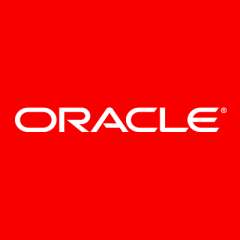

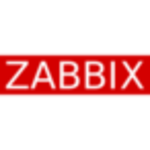


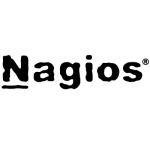



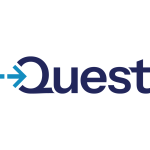
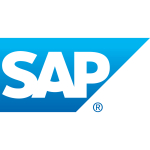


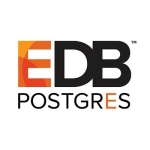

Hi Daniel Fisher. What are the major differences between TOAD and OEM in terms of functionality?